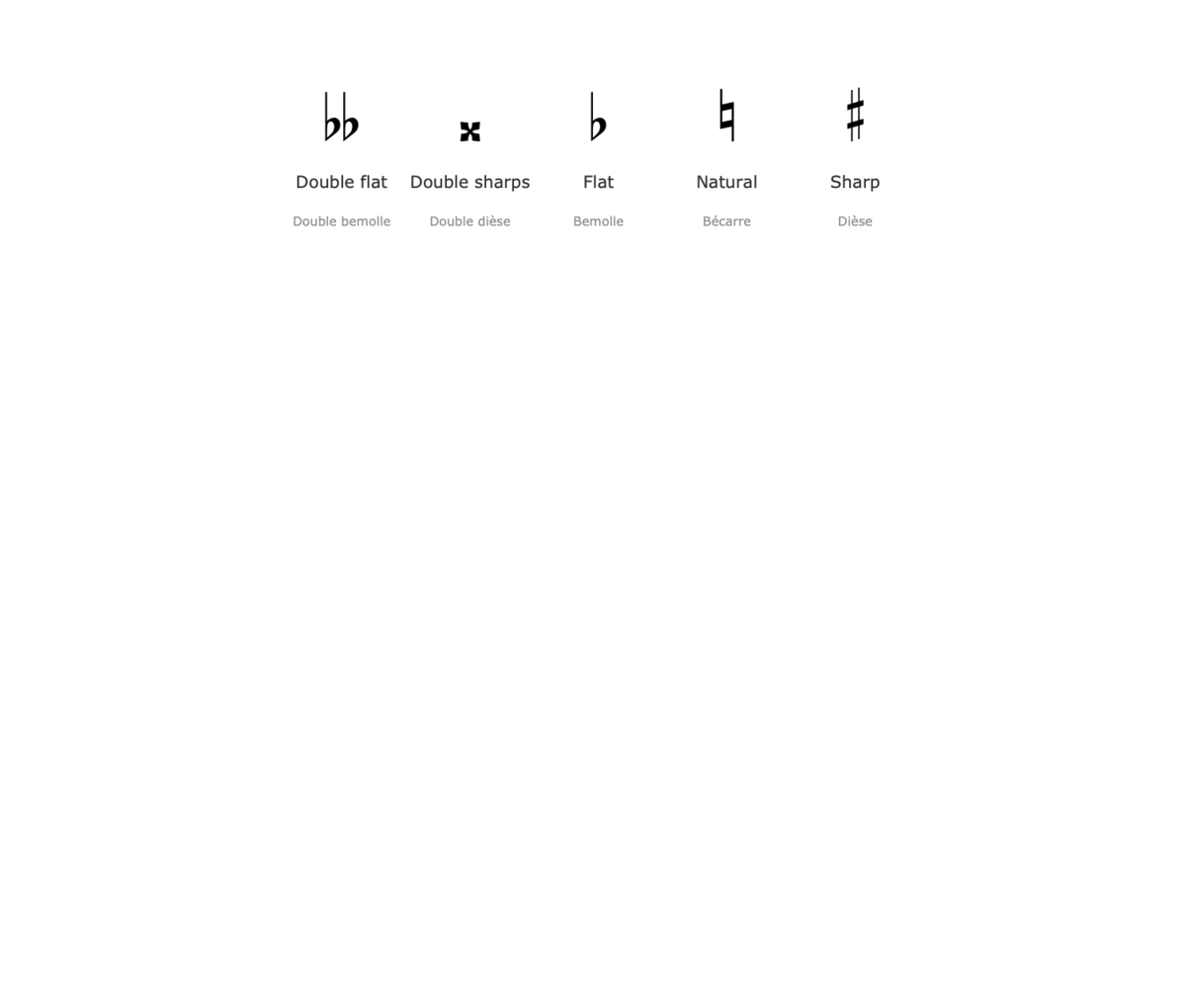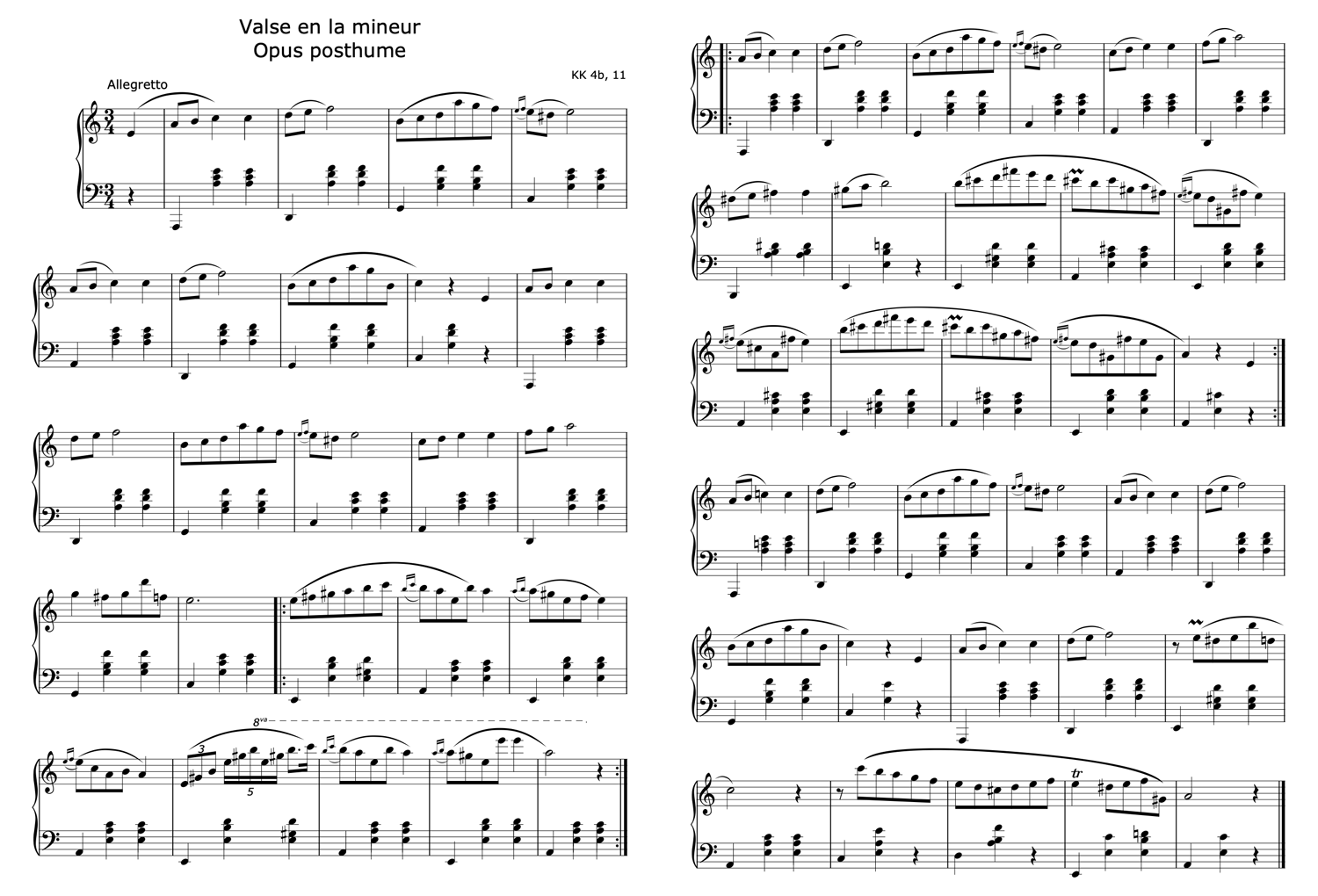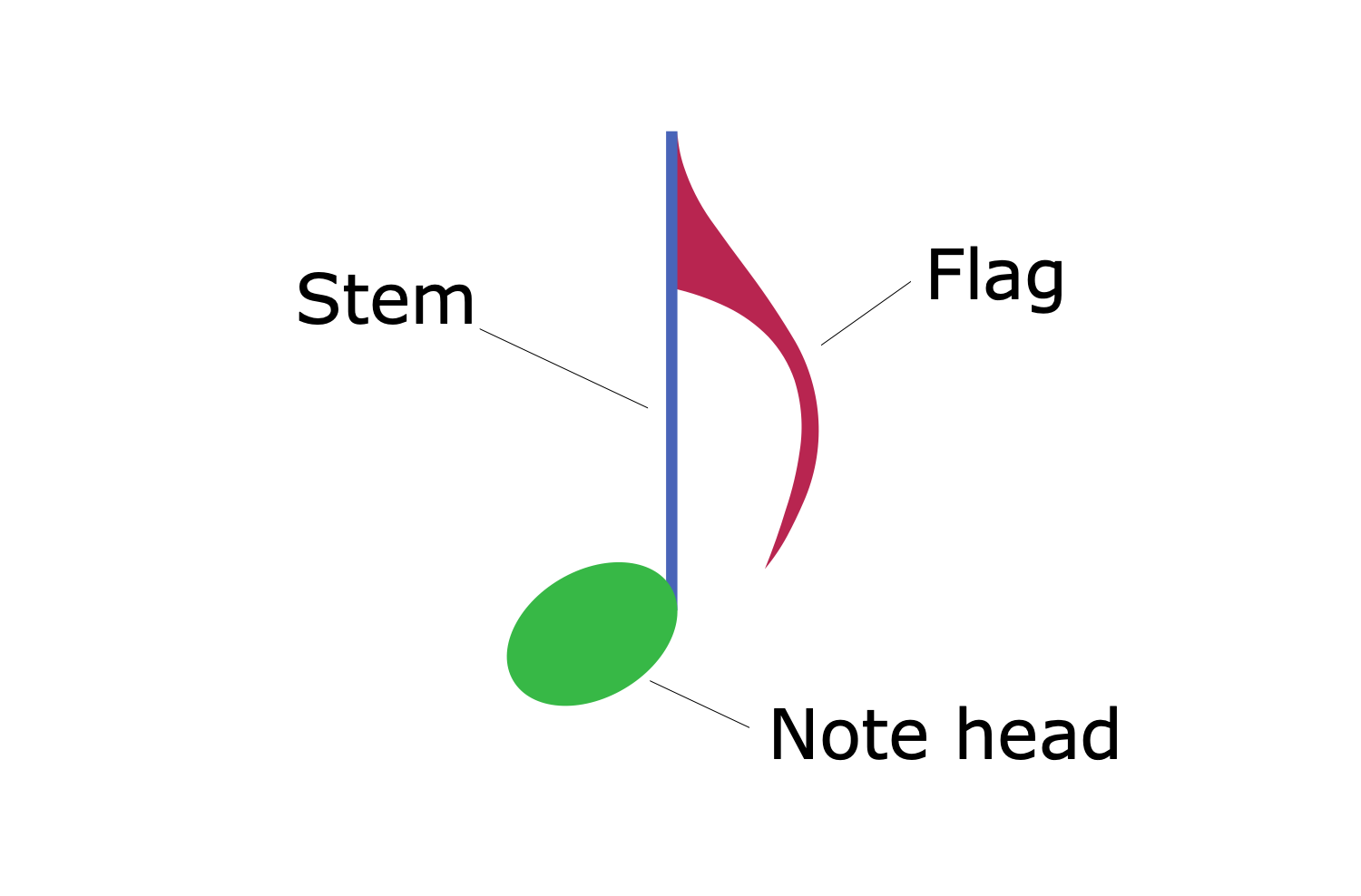Musical Symbols
Musical symbols are universally recognized symbols and signs in musical notation used to write music sheets. They reflect information about a piece of music, instructions on how it should be performed, and different aspects of music. These include pitch, speed, duration, rhythm, tempo, dynamics, expression, playing techniques, and many other nuances of playing music. Music symbols in the music sheet guarantee the unambiguity of performing music each time, regardless of the performer or any other factors.
Musical symbols are read and understood identically by musicians and composers around the world. They help precisely convey the composer’s thoughts, wants, intentions, and vision about how a certain piece of music should sound. Musicians, in their turn, read these symbols and know how to play a piece of music without having to hear it before.
There are hundreds of musical symbols, each has its specific meaning and most of them have been used for hundreds of years. Basic symbols include staff, clefs, and notes. Two main clefs are mostly used in music notation: the treble clef that notates the higher notes and higher pitches of music and the bass clef for the lower registers of music. A clef is usually placed at the left side of a staff, which comprises five lines and four spaces; being placed differently on the staff it indicates a change in register.
Music notes are named A, B, C, D, E, F, G. Each note lies on a specific line or space between the lines and has three parts. The parts of a musical note are: the head, the stem, and the flag. The note head is white or filled black and its place on the staff uniquely defines how to play the note. Sometimes, the note head is placed above or below the five lines of a staff. The note flag is placed at the right of the note stem and indicates how long to play a note. A dot added after the note head indicates the extension of the note length in half. The use of a tie is one more way to extend a note. The note stem is a thin line extending up or down from the note head, it doesn’t affect playing the note.

Example 1. Musical Symbols in Piano Sheet Music Solution Libraries
Music sheets may also include additional markings above or below a note. The numbers near the notes have value. The bottom number tells about the length of each beat and the top number indicates the number of beats in a measure. Whole steps and half steps provide a variety of sounds in music. The sharp symbol indicates that the note is a semitone higher than the note head to its right, at the same time the flat symbol vice versa indicates a semitone lower.
Key signatures indicate which notes should be played as sharps or flats. Accidentals modify the pitch of the notes. Articulations including accents specify the length, volume, and style of playing notes. The accent symbol indicates the increased dynamic of the note over other ones in the bar. The brace symbol indicates the connection of two clefs on a musical staff and should be played together. The arpeggio symbol points to the need to play notes in the chord independently and in a sweeping motion. The coda sign is used as a reference point in a piece of music. The crescendo symbol indicates an increase in the dynamic of music and the decrescendo symbol vice versa indicates a reduction in dynamic. Many other additional symbols are also used. All music symbols in a music sheet are interconnected, they are read and understood all together in the context of the whole piece of music.
Example 2. Frederic Chopin — Waltz in A Minor, B. 150
Create your music sheets easily in multifunctional ConceptDraw DIAGRAM vector diagramming software using the powerful tools of Piano Sheet Music solution and collection of vector musical symbols included in the solution libraries. Piano Sheet Music solution provides 12 libraries with 115+ vector musical symbols, icons and pictograms:
- Elements Accidentals
- Articulation Marks
- Dynamics
- Lines Bars Clefs
- Note Relationships
- Notes
- Octave Signs
- Ornaments
- Piano Notation
- Repetition and Codas
- Rests and Breaks
- Time Signatures
Feel free to use these standard symbols to make your music sheets clear and easily interpreted by musicians from all over the world. Record the music and print music sheets to place on your keyboard when performing the music.
Example 3. Parts of a Musical Note
The piano sheet music samples you see on this page were created in ConceptDraw DIAGRAM software using the drawing tools of the Piano Sheet Music Solution. These examples successfully demonstrate solution's capabilities and the professional results you can achieve using it. An experienced user spent 10-15 minutes creating each of these samples.
Use the powerful tools of the Piano Sheet Music solution to design your own music sheets for piano quick, easy, and effective.
All source documents are vector graphic documents. They are available for reviewing, modifying, or converting to a variety of formats (PDF file, MS PowerPoint, MS Visio, and many other graphic formats) from the ConceptDraw STORE. The Piano Sheet Music Solution is available for ConceptDraw DIAGRAM users.

